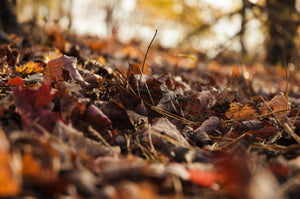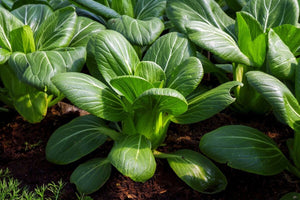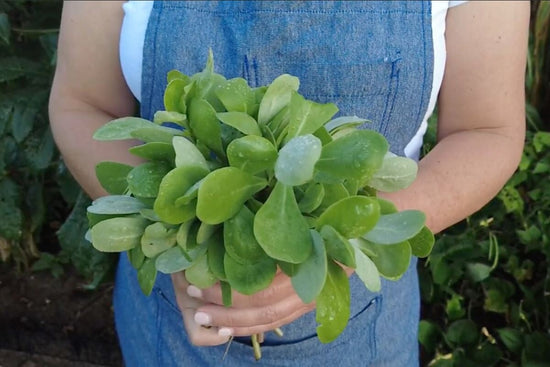Why You Should Grow Herbs and Leafy Greens Instead of Foraging
Foraging has gained popularity as a way to increase food security and connect with nature. But you can do one better: Grow your own plants instead of foraging. Why is growing better than foraging? We share our top five reasons for growing your own medicinal herbs and leafy greens.

What is Foraging?
Foraging isn’t just for mushrooms. There are lots of medicinal herbs and tasty wild greens that hikers and backcountry enthusiasts like to harvest. Foraging is simply gathering food for free. It’s something that our ancestors did out of necessity.
Now, in a world where food comes in boxes and bags, foraging is a fun way to connect with nature. As you learn to identify wild plants, you’ll add extra enjoyment to hiking and even walking through your neighborhood.
But there are some important reasons why growing your own leafy greens, herbs, and other plants is better than foraging.
5 Important Reasons to Grow Instead of Forage
Identification is 100% accurate.
It’s not just mushrooms that can cause illness and even death if misidentified. Things such as hemlock can be deadly as well. Many herbs and greens look similar but have very different chemical compounds. You never want to eat something that you aren’t 100% sure of what it is.
You don’t want to confuse feverfew with German chamomile or wild hemlock with anise. Is it wormwood or mugwort? Or is it ragweed? When you grow your own chervil, anise, and other herbs, you won’t be in danger of accidentally picking poisonous hemlock.
Avoid poaching and trespassing.
Although foraging is permitted on many federal lands, there are places where it is not allowed. Also, some plants may be off-limits in certain protected areas. When foraging, you want to avoid trespassing onto private property. That's easy to do when you grow leafy greens and medicinal herbs on your own personal property.
Responsible Harvesting.
Some areas with wild medicinal herbs can be overharvested, causing the plants to die back. White sage is in danger of overharvesting and poaching. By planting and harvesting in your own garden, you will leave natural habitats intact.
Increase food security.
Depending on where you live, you may not have the plants you want conveniently growing near you. When you fill your garden with useful herbs and greens, you can access them when you need them.
Know where it grows.
Some plants and herbs grow beside roads and places with contaminated soil. By growing your own herbs, you can ensure that they aren’t polluted.

Popular Foraging Plants You Can Grow
How do I grow my own herbs and greens?
Now that you know the benefits of growing vs foraging, there’s something else you should consider. If you are interested in growing medicinal herbs, you will find that growing your own healing garden is easy to do. Many herbs are perennials, so they are low maintenance and can be planted in permaculture gardens.
Our Planter’s Library covers how to grow many specific herbs and vegetables. These guides will give you the specifics. Many easy-to-grow perennials are worth adding to your landscape.
Besides being useful for human health, growing herbs in your garden can help the local ecosystem. Anise and dill are host plants for swallowtail butterflies, and borage and bee balm are loved by bees.
You can also help out the rest of your garden by planting herbs. Borage is an excellent companion plant. Plant it next to your vegetables to repel cabbage worms and tomato hornworms. It will also attract bees and other beneficial insects.
Wormwood will repel deer and insect pests. Nasturtium is a natural pest repellent and also edible.
The flowers of many herbs are beautiful as well as useful and will increase the visual interest of your landscape.
If you’d like to create a foraging-style garden, consider some popular foraging plant varieties. Asparagus, bunching onions, garlic chives, spinach, and garden cress are all excellent additions.
Go ahead and learn the names and how to identify plants on your daily walk or hike, but then come home and plant the things you want to harvest.
Plant some wild strawberries, sorrel, purslane, feverfew, Nettleleaf horsemint, and a host of other herbs, and enjoy “foraging” in your own backyard!
Popular Posts
-

What is Leaf Mold? 8 Reasons You Need to Make This Garden Gold!
-

How to Plant and Harvest Quick-Growing Bok Choy (Pak Choi)






Leave a comment